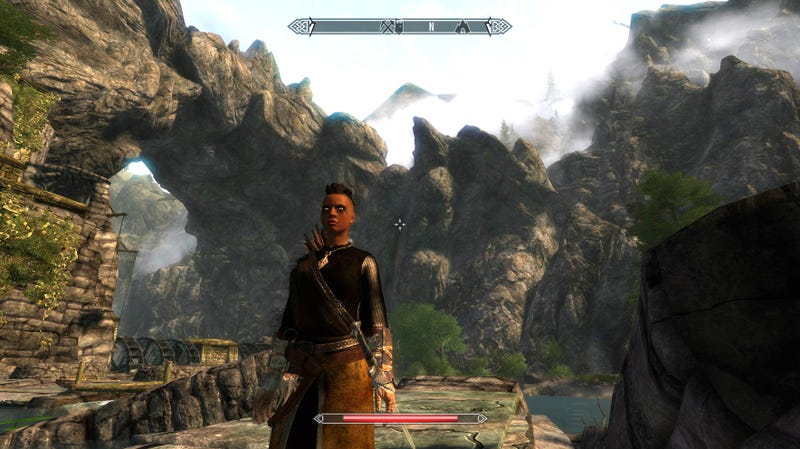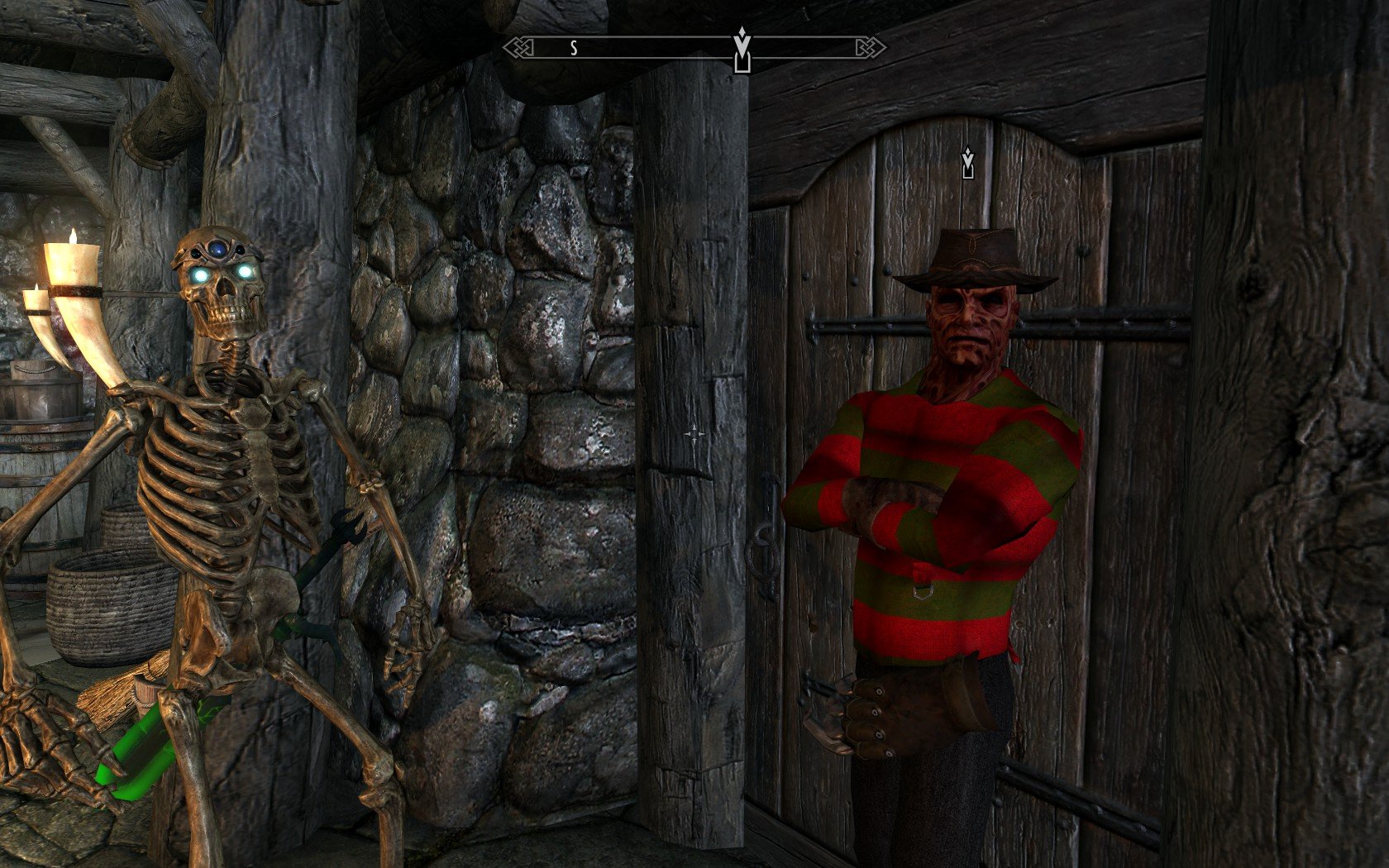Skyrim Where To Put Mods
- In a heavily modded Skyrim you might find that a few NPCs are walking around naked even though they have perfectly good clothes in their inventory due to some weird mod conflict or a script bug. You may not mind this when it is someone like Ysolda, but when it is an old beggar roaming the streets you might prefer they put their clothes back on.
- How to Install Skyrim Mods. To install Skyrim mods, you'll want to create an account at the Nexus Skyrim website. After installing a few modding utilities, you can begin downloading mods and installing them with just a few clicks.
'Skyrim' mods allow users to customize their playing experience with improvements, fixes and new content created by the community. Mods can be downloaded from various places on the Internet, the main source being TESNexus, but how to install them is not always clear. You can install these mods manually without using Steam.
The first Nexus Mods Screenshot Community Event is here! Submit your screenshots of Skyrim, Skyrim Special Edition, Enderal, Fallout 4, or Fallout 76 illustrating the event theme and seize your chance to win one of three £25 Steam Gift Cards ($33 depending on exchange rates). As we announced earlier this week.
Choose and Download Mods
Download the appropriate mods that you wish to install and prepare to install them by first extracting the contents. The mods will be downloaded as .zip or .rar files, so you will have to unarchive them, either by right-clicking the files and selecting 'extract' or by opening them with your preferred archive software.
Keep the extracted files in one place. Each mod will typically have two folders (Meshes and Textures) and a single .esp file. If you are installing multiple mods, you can merge these folders together or just keep them handy while you locate the 'Skyrim' installation directory.
Carefully check your mods to see if any of them have special instructions. Some mods don't work well together, and there will typically be a note included in the mod folder if there are known issues. Check through these notes to see if there are any special instructions in your specific mods.
Installing the Mods
Navigate to your game's installation folder. Even if you are not using Steam for this process, or do not use Steam in general, your mods will nonethess be installed to 'C:Program Files (x86)SteamSteamAppscommonskyrimdata'. Open this folder.
Click and drag the 'Meshes' and 'Texture' folders and the .esp file from the mod directory to your 'Skyrim' data directory. You will be asked if you wish to merge the folders you are moving with those already present in the 'Skyrim' file structure. Select 'Yes' for all.
Double check your files. You should now have the .esp files for your mods in the 'skyrimdata' directory and the meshes and textures should be merged into their appropriate folders.
Launch 'Skyrim' and test the content to see if the game has changed. Some mods that affect game play are very obvious, but you may have to travel to a specific area or talk to a specific NPC to see new content.
Video of the Day

Skyrim Where To Put Mods Minecraft
More Articles
Well this got a bit long-winded. Here we go
BASIC MANUAL INSTALLATION
Just drop the files into the data folder, any mod author worth his salt will have the folder structure set up so you can just extract the archive into /data and go.
You can get to the data folder by browsing the local content for Skyrim. This option might be in the right-click menu (don't have my computer in front of me to check), and is definitely in the game's properties under the “local game content” tab.
Once there, the general structure (in case you get mods with a bad or weird folder structure in their archives) is relatively straightforward:
- .esp, .esm, and .bsa files in the main /data folder
- textures have a specific folder structure in /data/textures
- Models and animations have a specific folder structure in /data/meshes
- Script files go in /data/scripts
Just drop the files in the right place, sort your mods with LOOT (Load Order Optimization Tool), and you're good to go. LOOT is one of two tools (besides a mod manager of your choice) that I and others recommend for dealing with Skyrim mods, we'll talk about them later; first, a warning.
.
Kannana kanne song lyrics. A WARNING ON NOT USING A MOD MANAGER
Be warned, if you install mods this way, that removing a mod (for example to resolve a conflict)) can be challenging if you have more than one. Mods can have entire folder trees that they need to function properly, including meshes(3d models), textures, scripts, translation strings, and audio files; and you generally want to keep your data folder as clean as possible. I STRONGLY RECOMMEND using a mod manager (either NMM or MO, though there could be others) as they can remove all of a mod’s files at once so you don't risk forgetting some.
Skyrim Where To Put My Mods
This is especially important if you use two or more texture mods, as these tend to have many files across several folders and can require directly overwriting another retexture's files as there's no load order for them (as there is for .esp and .esm files). A mod manager can keep track of which files are overwritten and automatically replace the overwritten files when removing another mod.

As an example of this… retexture A and retexture B both have the file /data/textures/armor/iron.dds; you install retexture A first, then retexture B, overwriting the file both times. You then decide you don't particularly like retexture B and want to remove it.
If you do this all manually, you have to remember to go back and get retexture A's file again, otherwise you'll have the default vanilla iron armor. If you used a mod manager to install both, it knows that B overwrote A and it will automatically replace the file.
Now multiply this scenario by 50 unless these retextures are very specific and only affect the one armor. Now try to remember which files were overwritten from each of 10 different texture mods. That's where a mod manager helps.
.
And before anyone says the textures won't get THAT bad… just as an example from memory, each of these mods overwrites some files from the mod(s) before it
- Clothing and Clutter Fixes
- Weapon and Armor Fixes
- Complete Crafting Overhaul
- AMidianBorn (armor, weapons, content add-on)
- Improved Closed-Faced Helmets
- Better Shaped Weapons
- Transparent Glass and any other set-specific mods
So yeah, if you're planning on using more than one or two mods…use a mod manager and save yourself some headaches.
.
RECOMMENDED TOOLS
Two things you want, whether you use a mod manager or not:
- LOOT
- Wrye Bash
LOOT sorts your mods for you and generates a load order (the order in which the game reads mod files). It takes into account dependencies and other metadata to automatically get the right order. It also warns you if you're missing any dependencies. Use it.
Wrye Bash can do a few things, but you want it for one: the bashed patch. When a mod alters the contents of chests or merchants or most other in game containers and inventories, it sets a list of the items that are possible to get. The problem if that if one mod adds axes to a list and a later mod adds swords instead, only swords will be added; this is because mods can only replace the entire list, not individual items in it. A bashed patch collects all of these changes and merges them into one mod that includes all changes to such lists, so mods can add to them without conflicting with every other mod which attempts to add to the same list. Basically, it resolves one type of mod conflict and if you have more than a handful of mods, you want it.